MyDiagnostick

-
Today, MyDiagnostick is the latest technological innovation in diagnostic field and arrhythmology screening.
By far the most sophisticated, innovative and reliable automated instrument in the field of Atrial Fibrillation diagnosis and more generically in the screening of patients ECG (electrocardiogram) on the territoryThe prevalence and incidence of atrial fibrillation is high and will grow.
Atrial Fibrillation (AF) is the most common arrhythmia, with a prevalence between 0.4 - 1% in the general popu- lation. The number of AF patients is expected to grow dramatically the coming decennia, especially for men and women above 65 years old. Within the age group of 65 to 75 years, the prevalence already has exceeded 5% and is further rising to 8% for people above 80 years old. The lifetime risk to get AF after the age of 55 is 23.8% in men and 22.2% in women.Within the European Union there are 4.5M people with AF and 2.3M in the United States. With 160,000 new cases each year in the US, this number is expected to rise to 3.3 million in 2020 and 5.6 million in 2050. Today, the estimated worldwide prevalence of AF ex- ceeds 6M patients with 720,000 new diagnosed cases eve- ry year. Diagnosis and treatment of AF is still far from optimal.The incidence of asymptomatic AF is high.
It is known that the prevalence of AF is largely under- estimated due to the asymptomatic and paroxysmal nature of AF. In addition to patients with diagnosed AF there is a (large) group of patients with undiagnosed AF. In most cases these patients are asymptomatic or have ‘vague’ complaints that may be associated with AF, but cannot be confirmed. In the Framingham Heart Study, Benjamin et al reported that 228 (40%) of 562 AF patients had asymptomatic AF. This study used bi- annual ECG diagnostics and up to 38 years of follow-up of patients. The study by Israel et al. has shown that in 110 patients with implanted pacemakers capable of detecting AF, 38% of the AF patients were asymptomatic during all visits to their physician. In 65% of the patients, the AF episodes were longer than 12 hours and in more than one third even longer than 48 hours.AF diagnosis
Many patients with asymptomatic AF are undiagnosed and therefore not treated, which leads to an increased risk for ischemic strokes. The annual stroke risk for AF patients not treated with anticoagulants is 5%, which is 2 to 7 times as high compared to non-AF patients. Irregular heartbeats and dizziness seldom occur during the doctors' visit. It is therefore difficult for a physician to diagnose AF. The recording of surveillance ECGs, obtained during (GP) office visits is an insensitive method for detection of asymptomatic AF. Clinical studies proved that more then 80% of these patients are missed. Moreover, pa- tients with a history of symptomatic AF have no guar- antee that recurrences will be symptomatic as well.Present diagnostic means are insufficient
Also 24-hour Holter monitoring is not an ideal dagnostic instrument to confirm AF. Because of the limited duration of the recording, confirmation of a AF is difficult. Several studies have shown that long-term opportunistic monitoring of patients with an increased risk of stroke (e.g. CHADSS2>1) raises the sensitivity of AF detection.MyDiagnostick
MyDiagnostick is a new diagnostic device (MDD IIa) for the detection and diagnosis of AF.Features
MyDiagnostick generates a Lead I ECG which is auto- matically analysed for the presence of AF. MyDiagnostick is very easy to use, with no buttons to control or parameters to be set. When holding the handles (electrodes) it will automati- cally switch on and start the ECG recording. After only one minute, AF outcome is displayed by MyDiagnostick turning either red: AF detected, or green: no AF detected. After use, the device will switch off automatically. MyDiagnostick is able to record and store over 140 ECG’s and thousands of measuring results. ECG’s and results can be displayed and printed when- ever MyDiagnostick is connected to a PC or laptop by the USB cable provided. MyDiagnostick is a valuable extension to the diagnostic devices on the market to- day. The current Holter- and event recorders use ECG skin electrodes and need careful setting, thus requiring medical personnel. Furthermore these systems do not have embedded AF detection algorithms, which means that AF episodes can only be determined afterwards.In practice
The intuitive character of MyDiagnostick allows instant start of AF detection, which can be repeated for longer periods of time, up to months even. MyDiagnostick does not depend on any infrastructure to diagnose AF and therefore can be used anywhere, anytime;; not only in your practice but also at the patients home or at work. MyDiagnostick has a clinically proven sensitivity of 100% and specificity of 95.7%, which allows also the early detection of paroxysmal AF. This makes MyDiagnostick the ultimate tool in your practice to find and diagnose AF patients. MyDiagnostick can be given along with those patients who repeatedly come to your practice with vague com- plaints or those who experience irregular heart beats each time they are not at your practice. MyDiagnostick can also be used for instance for the systematic screening of your 65 years and older pa- tient population with hypertension. In a recent study by Tieleman et al. MyDiagnostick was used during the flu-vac program. During a 4 hour fluvac program MyDiagnostick found 11 denovo AF patients in a population of 676 patients. The 44 known AF patients were all detected by MyDiagnostick as well. This makes MyDiagnostick ultimately useful to be used for population screening programs in your practice, next to the screening of individual patients. -
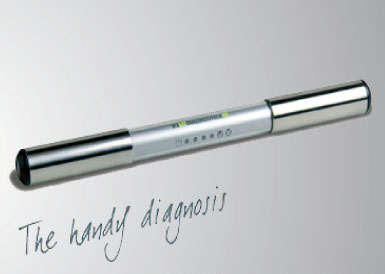
• Easy to use
• Instant diagnosis
• Embedded AF detection
• Superior sensitivity
• Highly specific
• Anyone, anytime, anywhere
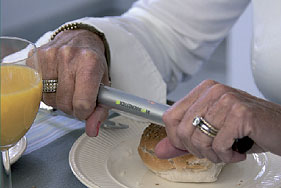

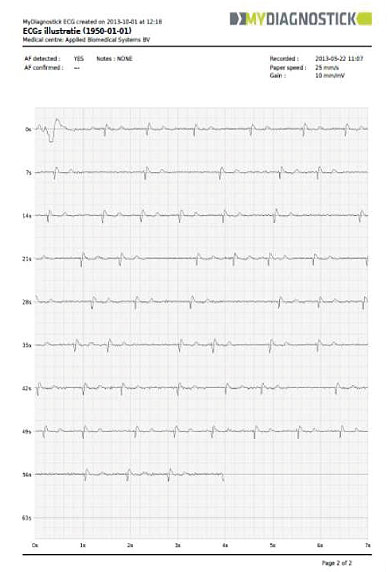



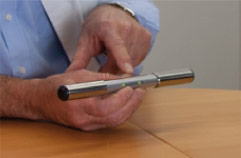
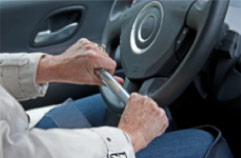
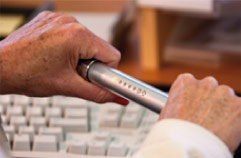

 User manual
User manual
 Contacts
Contacts